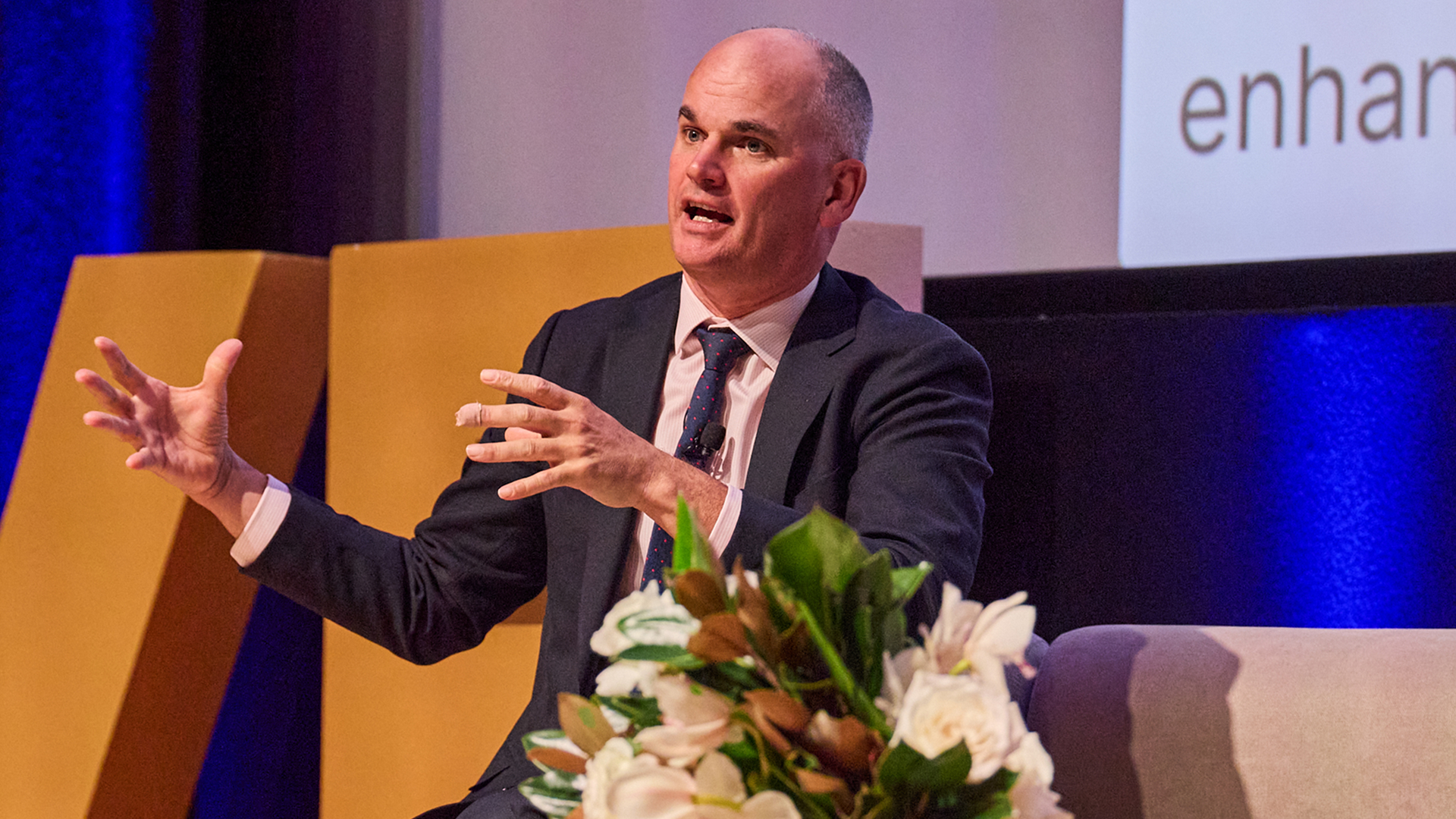Nick Griffin on finding stocks that can double earnings in 5 years

Nick Griffin’s path to fund management may have seemed preordained, his father worked in the industry, but his journey has been anything but ordinary.
After completing a commerce degree, Griffin missed out on a graduate role with one of the big four accounting firms. That setback led him to the Commonwealth Bank’s investment team, where he cut his teeth before embarking on a backpacking trip that ultimately set the trajectory for his career.
Landing in London, Griffin took on a role as an oil and gas analyst and soon found himself in Edinburgh, the traditional home of UK funds management. It was there he immersed himself in the world of long-term capital, working closely with some of the oldest and most respected investment houses in Europe.
Eventually, Griffin returned to Australia and joined K2 Asset Management, where he ran the firm’s global fund. Then, in 2016, he co-founded Munro Partners with a clear mission: back companies set to double their earnings in five years or less by riding powerful structural tailwinds.
In this episode of Success and More Interesting Stuff, Griffin shares how he built Munro from $20 million to more than $5 billion in FUM (as at June 2025), the key signals he looks for in structural winners, and what comes next for AI, healthcare, and defence investing.
Interview transcript highlights selected by a Livewire editor with the assistance of AI.
From AI to obesity drugs, defence stocks to digital platforms, Munro Partners’ Nick Griffin believes the secret to investing success lies in one simple idea, identify structural change and get there early.
Below is a selection of quotes highlighting the trends he’s watching and the framework that has served him well over two decades of growth investing.
Finding Structural Change
Nick Griffin’s investment philosophy centres on identifying companies poised for long-term structural growth, rather than trying to outguess short-term economic cycles.
The key is to develop an “edge” by understanding secular shifts in behaviour and technology, then pairing that insight with valuation discipline.
“You’ve got to find these big structural winners, you’re just too far away to be on the ground to see this stuff," says Griffin.
“To put it really simply, companies that grow earnings over time, their share prices generally go up.”
“You don’t have an edge on the economy… so why not just spend your time focusing on structural change?”
“Solve structural earnings growth and valuation, if you can solve those two things, that generally leads you to the big winners.”
Network Effects, Lessons from the Digital Revolution
The digital economy rewards category winners, especially those who benefit from network effects. Griffin argues that the biggest winners often emerge in digital environments where scale reinforces dominance, driving dramatic market share consolidation.
“When Google IPO’d there were about 11 search engines… but this concept of network effects kicked in whereby everything ended up on Google.”
“Google has 97% market share in search… that just doesn’t happen elsewhere.”
“Facebook got 90% share in social advertising… that won’t happen to your bank or supermarket. It only happens to digital businesses.”
“Digital advertising took share from regular advertising. E-commerce is still taking share from retail, Amazon was at 3% when we first bought it. We still think it can get to 40%.”
What’s Next for AI, and Nvidia
Griffin draws a straight line between Apple’s decade-long smartphone run and Nvidia’s current AI trajectory. In his view, Nvidia (NASDAQ: NVDA) is the central enabler of a long-term platform shift, and we’re still in the early innings.
“I would argue that Nvidia is sort of the Apple of this opportunity.”
“Apple went from $50 billion to $3 trillion… Nvidia is building the ecosystem for the AI apps that will follow.”
“We were worried people were overspending. I think you’re two years into something that’s going to go for 10 years.”
The Broader AI Opportunity
It’s not just Nvidia. Griffin sees a broad ecosystem of enablers, from energy to infrastructure, benefiting from AI’s compute demands.
“We need a lot of electricity… so power supply companies are big winners.”
“The people who build the data centres, construction companies, liquid cooling, those are big winners.”
“And then the hyperscalers themselves, Amazon, Google and Microsoft, who have to host this data.”
Is AI Good or Bad for Google?
While AI introduces competitive threats to Google’s search dominance, Griffin believes the monetisation opportunity more than offsets the risks.
“If the eyeballs go away from Google to these other apps, then that’s bad. But an AI search is potentially more profitable.”
“An AI search converts roughly four to five times a regular search.”
“Yes, Google will lose a bit of share, but they’ll pick up monetisation as they shift to AI search.”
“The company’s only on 15 times earnings because everyone’s convinced it’s going to disappear. I think there's a less than 50% chance Google disappears from here. And so mathematically it's not a bad bet from here.”
Will AI Destroy Jobs?
Rather than eliminate jobs, AI is more likely to shift them. Griffin likens AI to the mobile revolution, suggesting productivity gains will ultimately win out.
“This stuff will just happen over time… like how mobile changed how you check into a flight.”
“Yes, AI will be used to take out costs… but also to create a better customer experience and win competition.”
“60% of the jobs that exist in the world didn’t exist in 1940… life’s better this way.”
The Obesity Drug Megatrend
Griffin sees weight-loss drugs as a textbook example of structural change, with far-reaching implications across healthcare, food and lifestyle industries.
“Diet drugs have taken the world by storm… they have very small penetration at this stage because they’re expensive.”
“When we found Novo Nordisk and Eli Lilly, it was asymmetric upside. If it worked, great. If not, limited downside.”
“We now think Lily will be the dominant player… we’ve made more than three or four times our money on both.”
“There’s a cost factor. Prices need to come down a lot, and we’ve got to get to a tablet form, which I think is coming. Lilly’s definitely ahead on that.”
“Will we eradicate obesity? Don’t know. But if costs fall and we get generics, that’s a glass-half-full outcome. It’s in the blue sky scenario, not the base case.”
The Rise in Defence Spending
Global security dynamics have driven a marked increase in defence investment. Griffin explains how this theme has quietly become one of the strongest performers in Munro’s portfolio.
“We really changed our view the day the Ukraine war started… we started buying European defence companies.”
“Rheinmetall has gone up more than Nvidia since then. I find that just staggering.”
“This is structural growth in defence spending… it makes up roughly 10 to 15% of our fund today.”
Valuation Still Matters
Amid all the excitement about structural winners, Griffin remains grounded in the basics, earnings growth must be supported by valuation discipline.
“We’re bottom-up proving that the earnings of the company can double within five years.”
“If earnings double, the share price usually follows. The hard part is finding it before the market does.”
More episodes



1 topic
1 stock mentioned


